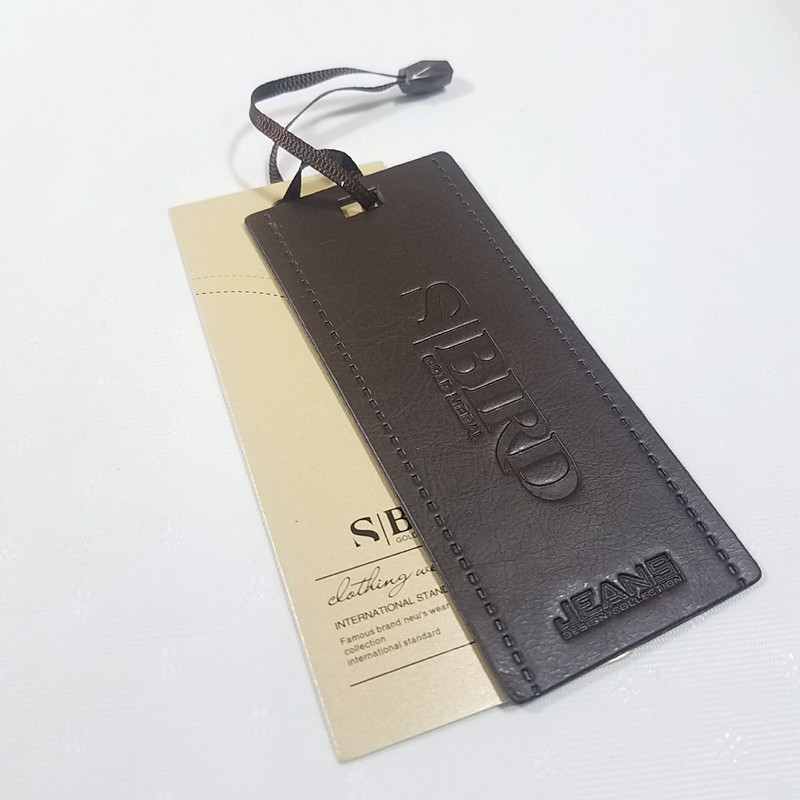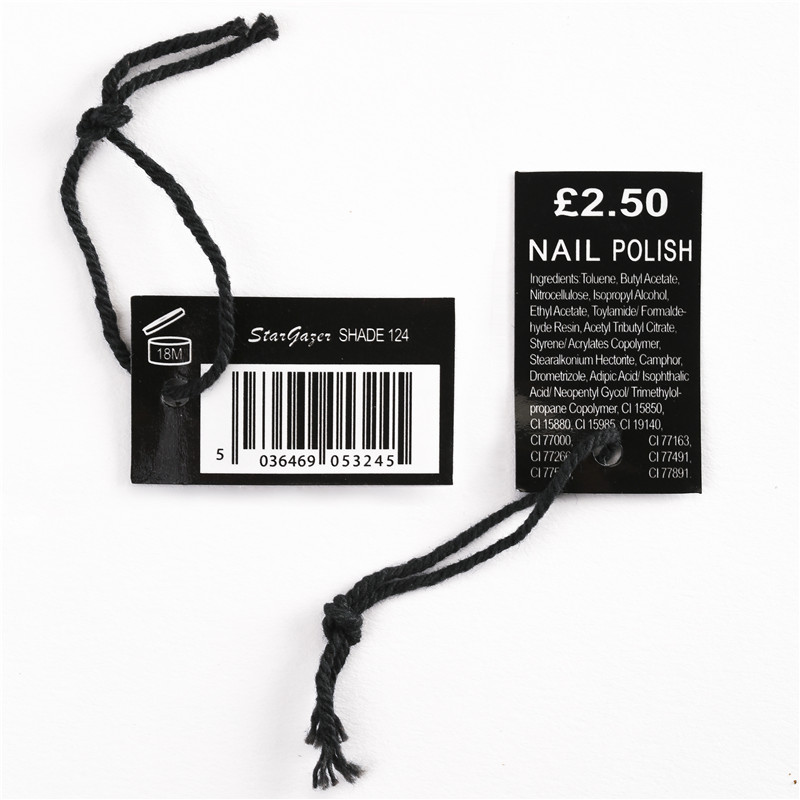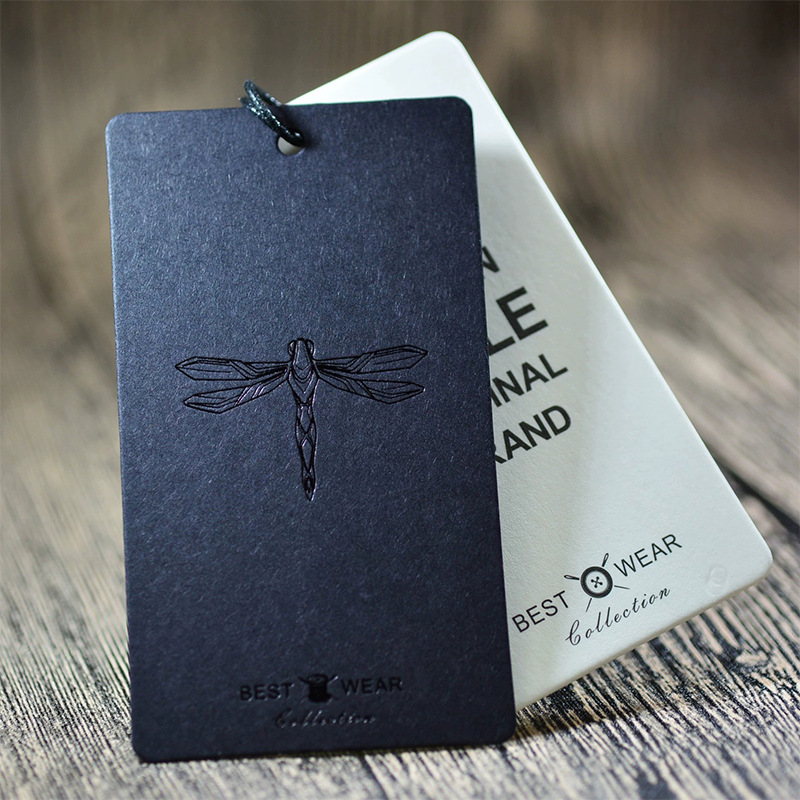Hang tags might seem like small details, but their impact is anything but minor. These unassuming cards attached to garments, bottles, and boxes carry far more than pricing—they carry personality, purpose, and story. In today’s competitive marketplace, where every element of presentation shapes perception, hang tags have evolved into essential tools for communication and branding.
This guide breaks down what hang tags really do and how they shape customer experience across industries, from fashion to packaging.
1. What Is a Hang Tag?
At its core, a hang tag is a piece of printed or custom-shaped material temporarily attached to a product—usually via string, twine, or plastic fastener. It’s often the first thing customers see when interacting with a new item in-store, and its role can range from purely functional to deeply expressive.
Most hang tags include basic details like the brand name, size, price, or barcode. But many go further. They explain the story behind the product, suggest how to use or care for it, or highlight sustainable sourcing. Unlike sewn-in labels or packaging stickers, hang tags are visible, tactile, and removable. That makes them uniquely suited to deliver supplementary information without interfering with the core design of the item.
You’ll find hang tags hanging from T-shirts and jeans, but also tied to handcrafted soaps, olive oil bottles, or notebooks. Their format can be as simple as a square card or as elaborate as a multi-layered piece with embossing, cutouts, or foil stamping. No matter the form, hang tags bridge the gap between a product and the message a brand wants to convey.
2. Common Uses of Hang Tags in the Apparel Industry
In fashion,hang tags do much more than hold a barcode. They function as extensions of a brand’s visual language and value system.
Take, for instance, a brand focused on sustainability. Their hang tag might be made from recycled kraft paper, printed with soy-based ink, and feature messaging about organic cotton or ethical manufacturing. That one tag, even before a customer tries on the garment, starts to frame how they view the company.
For luxury or high-end labels, tags often reflect refinement—thick, textured paper, metallic foil, minimalist typography. A well-crafted tag can immediately signal exclusivity and justify premium pricing. It becomes part of the unspoken value proposition.
Sometimes, hang tags tell micro-stories. They might explain the inspiration behind a limited edition collection, introduce the designer, or offer styling tips. Others include QR codes linking to digital lookbooks or behind-the-scenes videos. The experience no longer ends at the store—it continues online, guided by that little card.
And then there’s the practical side: size, SKU, season, wash instructions. Tags help staff with inventory and help shoppers find the right fit. For multi-language regions or export items, tags may carry translations or compliance statements. They keep necessary data accessible without compromising garment design.
It’s common for brands to experiment with interactive or layered tags—one layer for branding, another for care, a third for price. Especially in collections where fabric technologies are a selling point, separating content visually improves comprehension.
In short, hang tags in apparel are both messengers and mirrors. They reflect the brand, amplify its voice, and inform the customer—all in a space smaller than your phone.
3. How Hang Tags Are Used in Packaging and Non-Apparel Products
Clothing may be the most obvious category for hang tags, but they’re just as valuable in non-textile sectors—often with more flexibility.
Consider premium candles. A tag tied to the wick or wrapped around the jar might describe the scent profile, burn time, or wax origin. These details add texture to the buying experience and help differentiate one candle from the next.
In food and beverage, hang tags offer a unique blend of regulation and storytelling. A small-batch distillery might use tags to list batch numbers, aging notes, or suggested pairings. Local honey producers often attach handmade tags that explain the flora bees visited or the harvest date. These tags turn a simple jar into a conversation piece.
Cosmetics and skincare brands use hang tags to emphasize natural ingredients, cruelty-free status, or usage steps. For products without much packaging—like bar soap or lotion bars—tags provide critical space for instructions and branding.
Gifting industries love hang tags because they enhance presentation without increasing packaging waste. On wine bottles, tags add flair without tampering with the main label. On gift boxes, they become a space for thank-you messages or special edition identifiers.
Even in hardware or tools, hang tags show up. Waterproof plastic tags on garden equipment or camping gear highlight features like rust resistance, temperature range, or folding mechanisms. These aren’t aesthetic touches—they’re functional quick reads in aisle settings where packaging might be minimal.
For small businesses and makers, hang tags are a lifeline. When full packaging isn’t viable, tags become the primary space for storytelling and brand differentiation. They're easy to print in low quantities and swap seasonally.
The key advantage outside apparel? Versatility. Hang tags are a flexible add-on that enhances presentation, informs customers, and adds professionalism to products that might otherwise look bare on the shelf.
4. Types of Hang Tags by Material and Printing
Material choice says as much as the content on the tag itself. From eco-conscious to ultra-modern, the substrate shapes perception.
Paper is the most common—and most adaptable. It ranges from budget-friendly coated stock to heavy, textured cotton paper. Matte finishes convey a soft, contemporary feel; gloss adds sharpness and contrast. Many companies choose FSC-certified paper to align with sustainability goals.
Kraft paper is a favorite among eco and handmade brands. Uncoated and earthy in tone, it complements natural textures and minimal aesthetics. It also accepts ink and stamping well, making it ideal for limited-run customization.
Plastic tags, often used in retail-heavy environments or outdoor products, offer durability. They can be transparent or colored, and typically come in thicker gauges to withstand handling. Think hang tags on rain jackets, tents, or utility knives—products that get exposed to moisture or rough use.
There’s also a growing trend toward alternative materials. Seed paper (which can be planted), fabric swatches, wood veneers, and even leather cutouts are making their way into hang tag designs. These unusual materials turn a common object into a tactile experience.
On the printing side, brands are moving beyond basic ink. Foil stamping, spot UV gloss, embossing, die-cut shapes, perforation, and lamination all serve aesthetic and functional purposes. A foil-embossed logo, for instance, isn’t just for shine—it creates texture and emphasis.
Some brands layer materials for effect: a matte tag topped with a clear overlay; a translucent vellum card nested over textured kraft. This dimensionality doesn’t just impress—it creates a sense of thoughtfulness.
Choosing materials and finishes is less about budget, more about intention. The right combination can turn a two-cent card into a memorable touchpoint.
To help illustrate how different materials align with specific uses, here’s a quick comparison:
| Material Type |
Key Features |
Best For |
| Standard Coated Paper |
Smooth surface, affordable, easy to print |
Mass-market fashion, cosmetics |
| Kraft / Recycled Paper |
Natural look, eco-friendly appeal |
Sustainable brands, handmade goods |
| Plastic / PVC |
Waterproof, durable, sleek |
Outdoor gear, hardware, tools |
| Seed Paper / Cotton Paper |
Plantable or textured, great for storytelling |
Gift products, artisan items |
| Wood / Leather / Fabric |
Premium feel, high tactile impact |
Luxury packaging, limited editions |
On the printing side, brands are moving beyond basic ink. Foil stamping, spot UV gloss, embossing, die-cut shapes, perforation, and lamination all serve aesthetic and functional purposes. A foil-embossed logo, for instance, isn’t just for shine—it creates texture and emphasis.
Some brands layer materials for effect: a matte tag topped with a clear overlay; a translucent vellum card nested over textured kraft. This dimensionality doesn’t just impress—it creates a sense of thoughtfulness.
5. Design Considerations When Creating a Hang Tag
Designing an effective hang tag requires balancing creativity with clarity. It’s tempting to pack in as much branding as possible, but restraint often works better.
Start with hierarchy. What’s the one thing you want customers to notice? Is it the brand name? A sustainability message? A special edition callout? That should dominate the layout—other details can follow.
Typography matters more than many realize. Fonts should align with your brand tone, but they also need to be legible at small sizes. Script fonts might look elegant, but they’re useless if customers can’t read them in dim retail lighting.
Size is another factor. Larger tags give you more room to say something—but they can overpower small items or look awkward on delicate garments. Smaller tags feel minimalist but might not fit all the content. Custom die-cuts can help navigate this, giving you room to stand out without bulk.
Then there’s how it attaches. Do you want a twine loop? A plastic fastener? A safety pin? The method can subtly reinforce brand cues—rustic, modern, utilitarian, refined.
Some brands go beyond printed info and include add-ons—QR codes, coupon tear-offs, loyalty punches, even scent strips. These add layers of engagement, especially in retail where customers browse fast.
Also worth considering is the double-sided format. Often overlooked, the back of a hang tag is valuable space. It can host care instructions, translations, social media handles, or a discreet discount code. Don’t waste that real estate.
Ultimately, your tag should feel like an extension of your product, not an afterthought.
6. Why Hang Tags Matter for Brand Perception and Consumer Behavior
Hang tags may be small, but they sit right at the intersection of form, function, and emotional influence.
When a customer first picks up a product, the tag is often their first point of contact. It communicates brand values without requiring explanation. A recycled-paper tag immediately suggests sustainability. A high-gloss black tag with metallic ink hints at sophistication. These are instant, nonverbal cues that shape how customers interpret what they’re holding.
Tags also carry a sense of permanence. Even though they’re designed to be removed, many customers keep them—especially when they feel well-made or thoughtful. Some tags live on as bookmarks, gift tags, or scrapbook additions. That’s post-sale engagement few marketing tools can match.
Psychologically, a well-designed hang tag creates confidence. It tells customers, “This product was made with care.” That level of detail implies consistency across the brand experience—from production to packaging to customer service.
From a business standpoint, hang tags also help increase perceived value. A plain T-shirt with a thoughtfully designed tag feels more expensive. The same principle applies to soaps, accessories, or stationery.
And in the age of social sharing, they photograph well. A unique tag can become part of an Instagram shot, extending brand reach beyond the store shelf.
In short, hang tags guide the story customers tell themselves. They’re not just labels—they’re low-cost, high-impact extensions of your brand.
Final Thoughts
When done right, hang tags are more than accessories. They’re strategic tools that carry your message directly to your audience. Whether you’re launching a fashion line, bottling your first small-batch product, or updating retail packaging, don’t overlook the value packed into these small, silent brand ambassadors.
To explore custom hang tag options that match your product and brand vision, Contact us at candy@kayaol.com.








 We like to do design according to all the customers' requirements, or offer them our new designs. With strong OEM/ODM capabilities, we can fill your sourcing demands.
We like to do design according to all the customers' requirements, or offer them our new designs. With strong OEM/ODM capabilities, we can fill your sourcing demands.